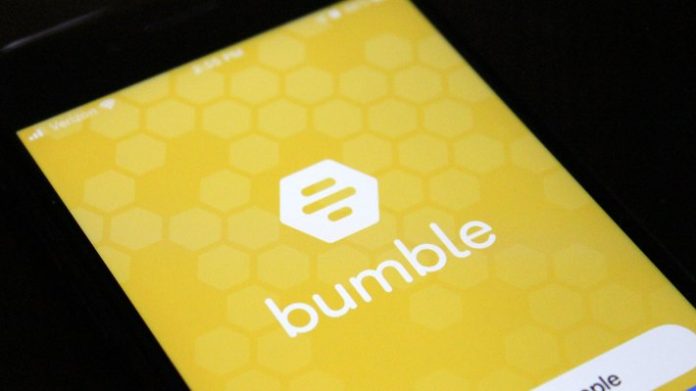Dating platform Bumble is looking to enhance its non-dating social features with a further investment into its Bumble BFF feature, first launched in 2016. This friend-finding feature currently uses the same swiped-based mechanics to connect people looking for platonic relationships, but will soon expand to include social networking groups where users can connect with one another based on topics and interests, not just via “matches.”
TechCrunch heard Bumble was venturing more into the social networking space, and Bumble recently hinted at this development during its first-quarter earnings, announced this month.
On the earnings call, the company referenced a Bumble BFF “alpha test” that had been performing well.
It described the test as offering new ways for “people to discover and get to know each other around shared joys and common struggles.” Bumble founder and CEO Whitney Wolfe Herd added that, so far, over 40% of “active BFF users” were engaging with the new experiences being tested and the feature’s one-month retention was upwards of 75%.
Bumble didn’t, however, describe the product in much detail, beyond noting it offered a “new group format” for networking.
Reached for further insights, product intelligence company Watchful had additional information. It had uncovered screenshots showing a women-focused “social groups” feature.
There were around 30 different topics available, including things like “Women in Business,” “Networking + mentoring,” “Finding fulfillment,” “Mental health,” “Working moms,” “Body positivity,” “Self care,” “Eating well,” “Grad students,” “Money management,” “Building a better world,” “Recent grads,” “Women’s empowerment,” “Mom life,” “Breakups suck,” “Single not alone,” “Workouts,” “Study hacks + motivation,” “Path to parenthood,” “Pet Parents,” “Wanderlust,” and others.
Users could join the groups and create multimedia posts or reply to existing posts, similar to a threaded group chat or lightweight networking product. The topics, so far, seem to cater to a slightly broader crowd than just “young adults,” given there were groups for students as well as working moms.
Bumble confirmed to us this is the same feature that was being discussed during its earnings.
“We are currently testing new product features in our Bumble BFF community for a small number of people. We are assessing feedback from this test to help inform our final product decisions,” a Bumble spokesperson told TechCrunch.
Image Credits: Bumble screenshot via Watchful
On the call, Wolfe Herd had also suggested the new BFF feature could potentially help Bumble to generate revenue further down the road.
“We are very focused on the product, building the ecosystem, the communities, and really going into this new group format and testing the functionalities that we’ve been hard at work building,” Wolfe Herd said. “As we look to revenue in the future from BFF, there are really multiple pillars of opportunity — and one of them would be advertising,” she continued.
“We will be looking at baking in functionalities to be greater economy-efficient or advertising-ready for the future, but not to expect any near-term revenue from that,” the exec had noted.

Image Credits: Bumble screenshot via Watchful
Originally, the Bumble BFF feature had been designed to help Bumble serve its growing audience of younger singles, who were often looking for new friends to hang out with, not just date. The company had explained at the time of its 2016 launch that it got the idea not only based on user feedback but also because it observed people using its dating app to make friends — particularly when they had just moved to a new city or were visiting a place for a limited time, like on vacation.
Bumble BFF also allowed the company to leverage some of the same technology it was using to create romantic matches — algorithms based on interests, for example — and put them to use for helping users forge platonic connections.
But in the years following its launch, friend-finding has spun out to become its own app category of sorts, particularly among the younger Gen Z demographic who’s more inclined to socially “hang out” online, including through live video, audio, and chat-based groups. Snapchat’s platform apps are a good example of this trend in action, as is Gen Z livestreaming app Yubo. Then there was dating giant Match Group’s biggest-ever acquisition with last year’s $1.73 billion deal for Hyperconnect, a company that had been more focused on social networking than dating.
In addition, dedicated social experiences have sprung up to serve Bumble’s core demographic of young, professional women including the motherhood-focused Peanut app; leadership network for professional women, Chief; creator platform for women, Sunroom; female college influencer network 28 Row; community-focused Hey! Vina; and others.
Combined, these factors could create trouble for Bumble, particularly if younger Gen Z users are less inclined to adopt traditional swipe-based dating apps — or, when they do, it’s more to just meet new people, not partners.
Of these, Peanut seems to have more overlap with what Bumble is building — which is interesting, too, since Peanut was founded by former Badoo deputy CEO Michelle Kennedy who brought her understanding of dating app concepts to online socializing. (Today, Bumble, Inc. operates Bumble, Badoo, and its latest acquisition Fruitz.) Now, Peanut’s concepts are making their way back to Bumble.
Asked for thoughts on this latest development, Kennedy said it “completely validates the market” that Peanut has been working in for many years — particularly as the current groups spotted had been women-focused.
“It’s something that we’ve always believed in. We’ve always known that it’s a huge opportunity. We’ve always seen that. And for Bumble to say, ‘yeah, we agree.’ Huge! Couldn’t be happier,” she said.
Bumble has not said when it expects to launch the social features to the general public.
The company just posted a strong Q1 where it reported $211.2 million in revenue, higher than the consensus estimate of $208.3 million and a 7.2% increase in paying users in the quarter. Bumble’s forecast for its fiscal year 2022 revenue is bein the range of $934-944 million, higher than previously estimated.

